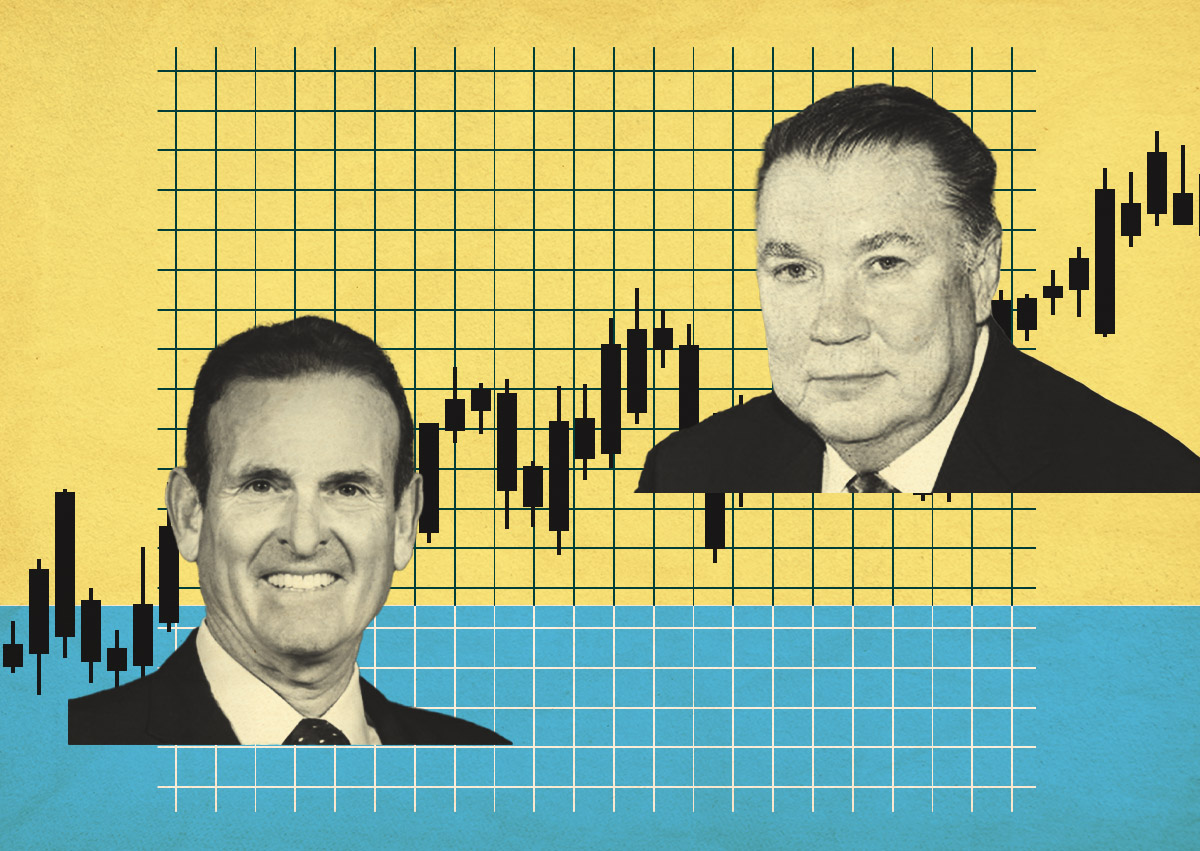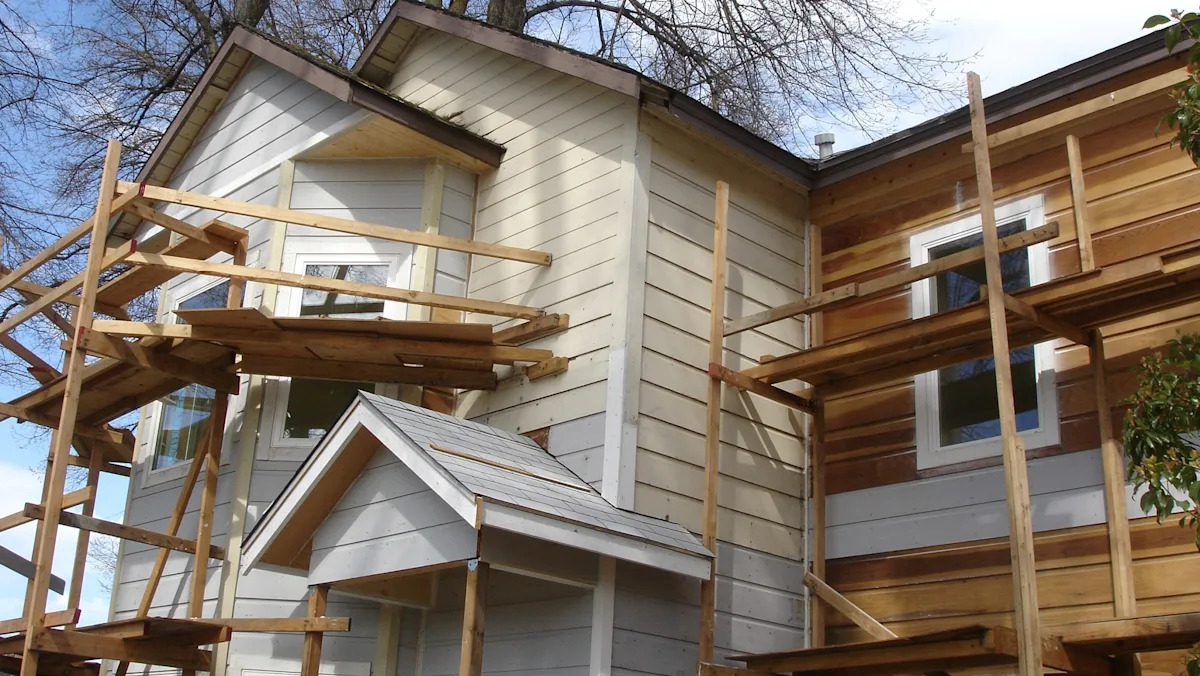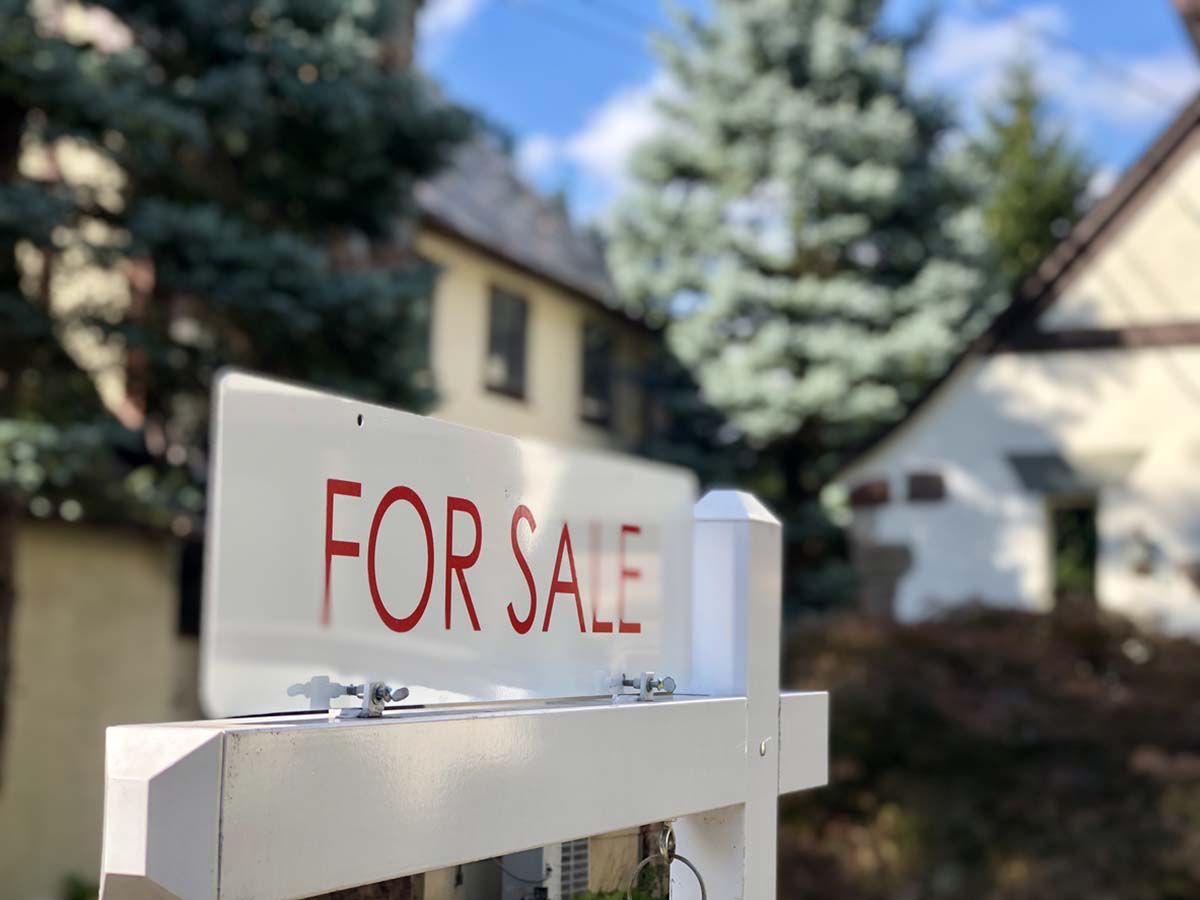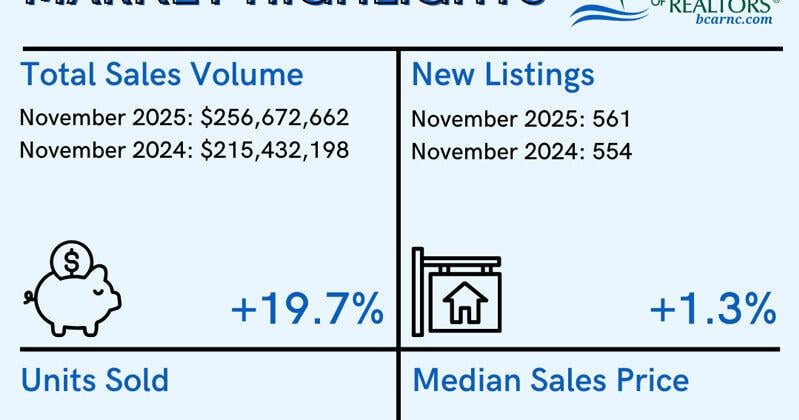H
omebuilder stocks are experiencing a surge in popularity due to potential interest rate cuts and political discussions surrounding housing affordability. In the third quarter, these stocks have risen by 20 percent, approaching a record high. D.R. Horton's stock has seen a 31 percent increase, while Lennar shares have soared by 19 percent in the same period. This growth is attributed to the possibility of interest rate cuts, which Federal Reserve chair Jerome Powell has hinted at in recent statements. Mortgage rates have already begun to decrease, averaging at 6.35 percent for a 30-day fixed-rate mortgage as of August 29th, according to Freddie Mac. If rate cuts occur, they could further lower these rates, making home buying more appealing to consumers.
The discussion around housing affordability has reached a high political level, with Vice President Kamala Harris pledging to build 3 million homes for either rent or ownership by the end of her first term if elected president. However, the feasibility of this goal is uncertain due to the complex rules governing home construction, which primarily reside at the local level, limiting federal control over the process.
In related news, Federal Reserve chair Jerome Powell has signaled a potential rate cut in September, which could further boost the homebuilding industry. This development comes as mortgage rates have been on a downward trend, averaging at 6.35 percent for a 30-day fixed-rate mortgage as of August 29th, according to Freddie Mac. If rate cuts occur, they could push these rates even lower, making home buying more attractive to consumers.
The surge in homebuilder stocks can be attributed to a combination of factors, including potential interest rate cuts and political discussions around housing affordability. In the third quarter, D.R. Horton's stock has risen by 31 percent, outperforming all but two other stocks in the S&P 500 Index. Lennar shares have also seen significant growth, soaring by 19 percent in the same period.
The growth in homebuilder stocks is largely due to the possibility of interest rate cuts, which Federal Reserve chair Jerome Powell has hinted at in recent statements. Mortgage rates have already begun to decrease, averaging at 6.35 percent for a 30-day fixed-rate mortgage as of August 29th, according to Freddie Mac. If rate cuts occur, they could further lower these rates, making home buying more appealing to consumers.
The discussion around housing affordability has reached a high political level, with Vice President Kamala Harris pledging to build 3 million homes for either rent or ownership by the end of her first term if elected president. However, the feasibility of this goal is uncertain due to the complex rules governing home construction, which primarily reside at the local level, limiting federal control over the process.
In related news, Federal Reserve chair Jerome Powell has signaled a potential rate cut in September, which could further boost the homebuilding industry. This development comes as mortgage rates have been on a downward trend, averaging at 6.35 percent for a 30-day fixed-rate mortgage as of August 29th, according to Freddie Mac. If rate cuts occur, they could push these rates even lower, making home buying more attractive to consumers.
The surge in homebuilder stocks can be attributed to a combination of factors, including potential interest rate cuts and political discussions around housing affordability. In the third quarter, D.R. Horton's stock has risen by 31 percent, outperforming all but two other stocks in the S&P 500 Index. Lennar shares have also seen significant growth, soaring by 19 percent in the same period.
The growth in homebuilder stocks is largely due to the possibility of interest rate cuts, which Federal Reserve chair Jerome Powell has hinted at in recent statements. Mortgage rates have already begun to decrease, averaging at 6.35 percent for a 30-day fixed-rate mortgage as of August 29th, according to Freddie Mac. If rate cuts occur, they could further lower these rates, making home buying more appealing to consumers.
The discussion around housing affordability has reached a high political level, with Vice President Kamala Harris pledging to build 3 million homes for either rent or ownership by the end of her first term if elected president. However, the feasibility of this goal is uncertain due to the complex rules governing home construction, which primarily reside at the local level, limiting federal control over the process.
In related news, Federal Reserve chair Jerome Powell has signaled a potential rate cut in September, which could further boost the homebuilding industry. This development comes as mortgage rates have been on a downward trend, averaging at 6.35 percent for a 30-day fixed-rate mortgage as of August 29th, according to Freddie Mac. If rate cuts occur, they could push these rates even lower, making home buying more attractive to consumers.
The surge in homebuilder stocks can be attributed to a combination of factors, including potential interest rate cuts and political discussions around housing affordability. In the third quarter, D.R. Horton's stock has risen by 31 percent, outperforming all but two other stocks in the S&P 500 Index. Lennar shares have also seen significant growth, soaring by 19 percent in the same period.
The growth in homebuilder stocks is largely due to the possibility of interest rate cuts, which Federal Reserve chair Jerome Powell has hinted at in recent statements. Mortgage rates have already begun to decrease, averaging at 6.35 percent for a 30-day fixed-rate mortgage as of August 29th, according to Freddie Mac. If rate cuts occur, they could further lower these rates, making home buying more appealing to consumers.
The discussion around housing affordability has reached a high political level, with Vice President Kamala Harris pledging to build 3 million homes for either rent or ownership by the end of her first term if elected president. However, the feasibility of this goal is uncertain due to the complex rules governing home construction, which primarily reside at the local level, limiting federal control over the process.
In related news, Federal Reserve chair Jerome Powell has signaled a potential rate cut in September, which could further boost the homebuilding industry. This development comes as mortgage rates have been on a downward trend, averaging at 6.35 percent for a 30-day fixed-rate mortgage as of August 29th, according to Freddie Mac. If rate cuts occur, they could push these rates even lower, making home buying more attractive to consumers.
The surge in homebuilder stocks can be attributed to a combination of factors, including potential interest rate cuts and political discussions around housing affordability. In the third quarter, D.R. Horton's stock has risen by 31 percent, outperforming all but two other stocks in the S&P 500 Index. Lennar shares have also seen significant growth, soaring by 19 percent in the same period.
The growth in homebuilder stocks is largely due to the possibility of interest rate cuts, which Federal Reserve chair Jerome Powell has hinted at in recent statements. Mortgage rates have already begun to decrease, averaging at 6.35 percent for a 30-day fixed-rate mortgage as of August 29th, according to Freddie Mac. If rate cuts occur, they could further lower these rates, making home buying more appealing to consumers.
The discussion around housing affordability has reached a high political level, with Vice President Kamala Harris pledging to build 3 million homes for either rent or ownership by the end of her first term if elected president. However, the feasibility of this goal is uncertain due to the complex rules governing home construction, which primarily reside at the local level, limiting federal control over the process.
In related news, Federal Reserve chair Jerome Powell has signaled a potential rate cut in September, which could further boost the homebuilding industry. This development comes as mortgage rates have been on a downward trend, averaging at 6.35 percent for a 30-day fixed-rate mortgage as of August 29th, according to Freddie Mac. If rate cuts occur, they could push these rates even lower, making home buying more attractive to consumers.
The surge in homebuilder stocks can be attributed to a combination of factors, including potential interest rate cuts and political discussions around housing affordability. In the third quarter, D.R. Horton's stock has risen by 31 percent, outperforming all but two other stocks in the S&P 500 Index. Lennar shares have also seen significant growth, soaring by 19 percent in the same period.
The growth in homebuilder stocks is largely due to the possibility of interest rate cuts, which Federal Reserve chair Jerome Powell has hinted at in recent statements. Mortgage rates have already begun to decrease, averaging at 6.35 percent for a 30-day fixed-rate mortgage as of August 29th, according to Freddie Mac. If rate cuts occur, they could further lower these rates, making home buying more appealing to consumers.
The discussion around housing affordability has reached a high political level, with Vice President Kamala Harris pledging to build 3 million homes for either rent or ownership by the end of her first term if elected president. However, the feasibility of this goal is uncertain due to the complex rules governing home construction, which primarily reside at the local level, limiting federal control over the process.
In related news, Federal Reserve chair Jerome Powell has signaled a potential rate cut in September, which could further boost the homebuilding industry. This development comes as mortgage rates have been on a downward trend, averaging at 6.35 percent for a 30-day fixed-rate mortgage as of August 29th, according to Freddie Mac. If rate cuts occur, they could push these rates even lower, making home buying more attractive to consumers.
The surge in homebuilder stocks can be attributed to a combination of factors, including potential interest rate cuts and political discussions around housing affordability. In the third quarter, D.R. Horton's stock has risen by 31 percent, outperforming all but two other stocks in the S&P 500 Index. Lennar shares have also seen significant growth, soaring by 19 percent in the same period.
The growth in homebuilder stocks is largely due to the possibility of interest rate cuts, which Federal Reserve chair Jerome Powell has hinted at in recent statements. Mortgage rates have already begun to decrease, averaging at 6.35 percent for a 30-day fixed-rate mortgage as of August 29th, according to Freddie Mac. If rate cuts occur, they could further lower these rates, making home buying more appealing to consumers.
The discussion around housing affordability has reached a high political level, with Vice President Kamala Harris pledging to build 3 million homes for either rent or ownership by the end of her first term if elected president. However, the feasibility of this goal is uncertain due to the complex rules governing home construction, which primarily reside at the local level, limiting federal control over the process.
In related news, Federal Reserve chair Jerome Powell has signaled a potential rate cut in September, which could further boost the homebuilding industry. This development comes as mortgage rates have been on a downward trend, averaging at 6.35 percent for a 30-day fixed-rate mortgage as of August 29th, according to Freddie Mac. If rate cuts occur, they could push these rates even lower, making home buying more attractive to consumers.
The surge in homebuilder stocks can be attributed to a combination of factors, including potential interest rate cuts and political discussions around housing affordability. In the third quarter, D.R. Horton's stock has risen by 31 percent, outperforming all but two other stocks in the S&P 500 Index. Lennar shares have also seen significant growth, soaring by 19 percent in the same period.
The growth in homebuilder stocks is largely due to the possibility of interest rate cuts, which Federal Reserve chair Jerome Powell has hinted at in recent statements. Mortgage rates have already begun to decrease, averaging at 6.35 percent for a 30-day fixed-rate mortgage as of August 29th, according to Freddie Mac. If rate cuts occur, they could further lower these rates, making home buying more appealing to consumers.
The discussion around housing affordability has reached a high political level, with Vice President Kamala Harris pledging to build 3 million homes for either rent or ownership by the end of her first term if elected president. However, the feasibility of this goal is uncertain due to the complex rules governing home construction, which primarily reside at the local level, limiting federal control over the process.
In related news, Federal Reserve chair Jerome Powell has signaled a potential rate cut in September, which could further boost the homebuilding industry. This development comes as mortgage rates have been on a downward trend, averaging at 6.35 percent for a 30-day fixed-rate mortgage as of August 29th, according to Freddie Mac. If rate cuts occur, they could push these rates even lower, making home buying more attractive to consumers.
The surge in homebuilder stocks can be attributed to a combination of factors, including potential interest rate cuts and political discussions around housing affordability. In the third quarter, D.R. Horton's stock has risen by 31 percent, outperforming all but two other stocks in the S&P 500 Index. Lennar shares have also seen significant growth, soaring by 19 percent in the same period.
The growth in homebuilder stocks is largely due to the possibility of interest rate cuts, which Federal Reserve chair Jerome Powell has hinted at in recent statements. Mortgage rates have already begun to decrease, averaging at 6.35 percent for a 30-day fixed-rate mortgage as of August 29th, according to Freddie Mac. If rate cuts occur, they could further lower these rates, making home buying more appealing to consumers.
The discussion around housing affordability has reached a high political level, with Vice President Kamala Harris promising to build 3 million homes for either rent or ownership by the end of her first term if elected president. However, the feasibility of this goal is uncertain due to the complex rules governing home construction, which primarily reside at the local level, limiting federal control over the process.
In related news, Federal Reserve chair Jerome Powell has signaled a potential rate cut in September, which could further boost the homebuilding industry. This development comes as mortgage rates have been on a downward trend, averaging at 6.35 percent for a 30-day fixed-rate mortgage as of August 29th, according to Freddie Mac. If rate cuts occur, they could push these rates even lower, making home buying more appealing to consumers.
The discussion around housing affordability around housing affordability around housing affordability around housing affordability around housing affordability around housing affordability around housing affordability around housing affordability around housing affordability around housing affordability around housing affordability around housing affordability around housing affordability around housing affordability around housing affordability around housing affordability around housing affordability around housing affordability around housing affordability around housing affordability around housing affordability around housing affordability around housing affordability around housing affordability around housing affordability around housing affordability around housing affordability around housing affordability around housing affordability around housing affordability around housing affordability around housing affordability around housing affordability around housing affordability around housing affordability around housing affordability around housing affordability around housing affordability around housing affordability around housing affordability around housing affordability around housing affordability around housing affordability around housing affordability around housing affordability around housing affordability around housing affordability around housing affordability around housing affordability around housing affordability around housing affordability around housing affordability around housing affordability around housing affordability around housing affordability around housing around housing around housing around housing affordability around housing around housing around housing around housing affordability around housing affordability around housing around housing affordability around housing affordability around housing affordability around housing around housing around housing around housing around housing around housing around housing around housing around housing around housing around housing affordability around housing around housing around housing around housing around housing around housing around housing around housing around housing around housing around housing around housing around housing around housing around housing around housing around housing around housing around housing around housing around housing around housing around housing around housing around housing around housing around housing around housing around housing around housing affordability around housing around housing around housing around housing affordability around housing affordability around housing affordability around housing around affordability around housing around housing around affordability around affordability around housing around housing around affordability around housing around housing around housing around housing.
affortably.
affably, housing, housing, housing, housing, housing, afforthelection investably investably, suggesting investability investing invest invest invest invest invest invest invest.














